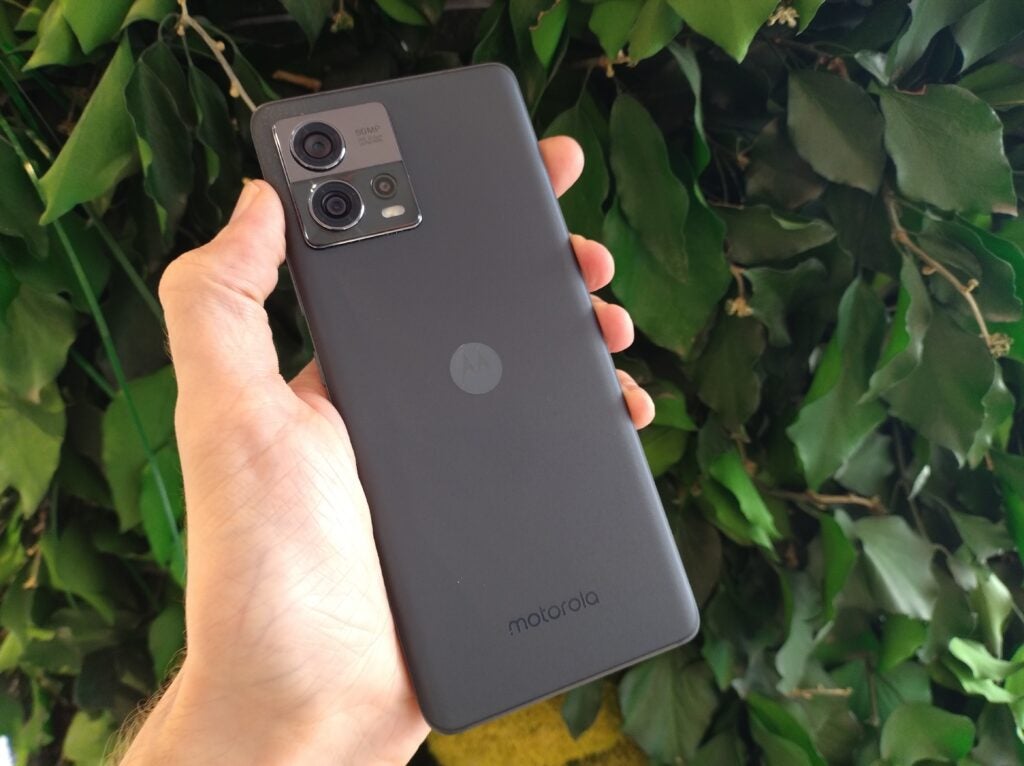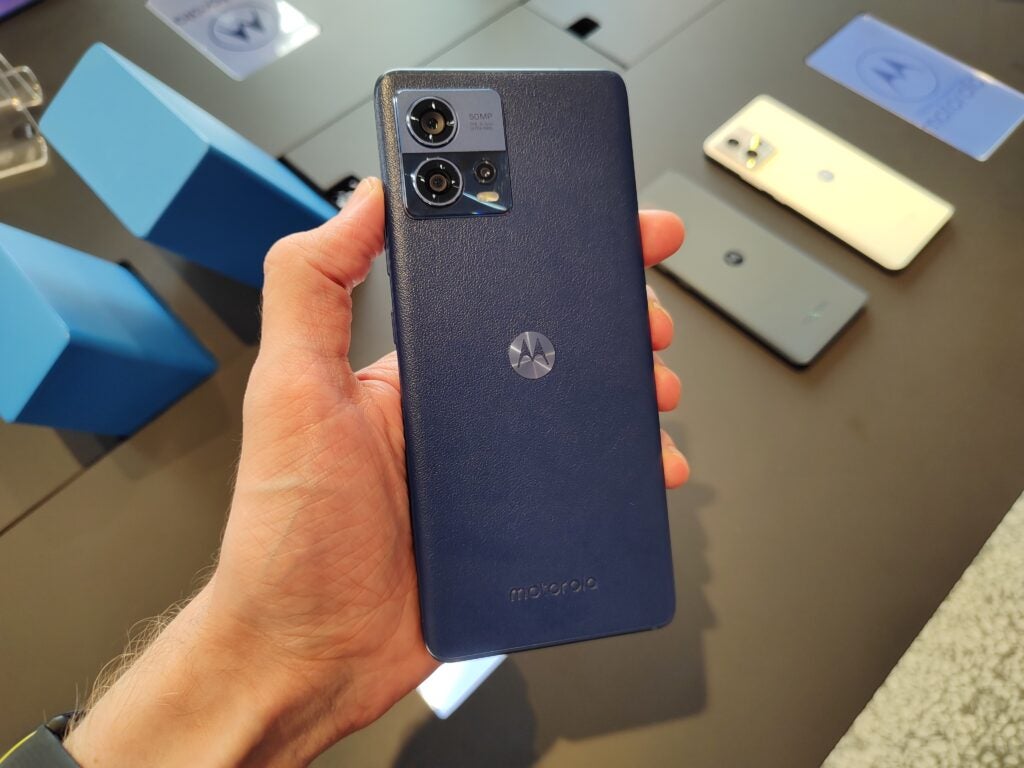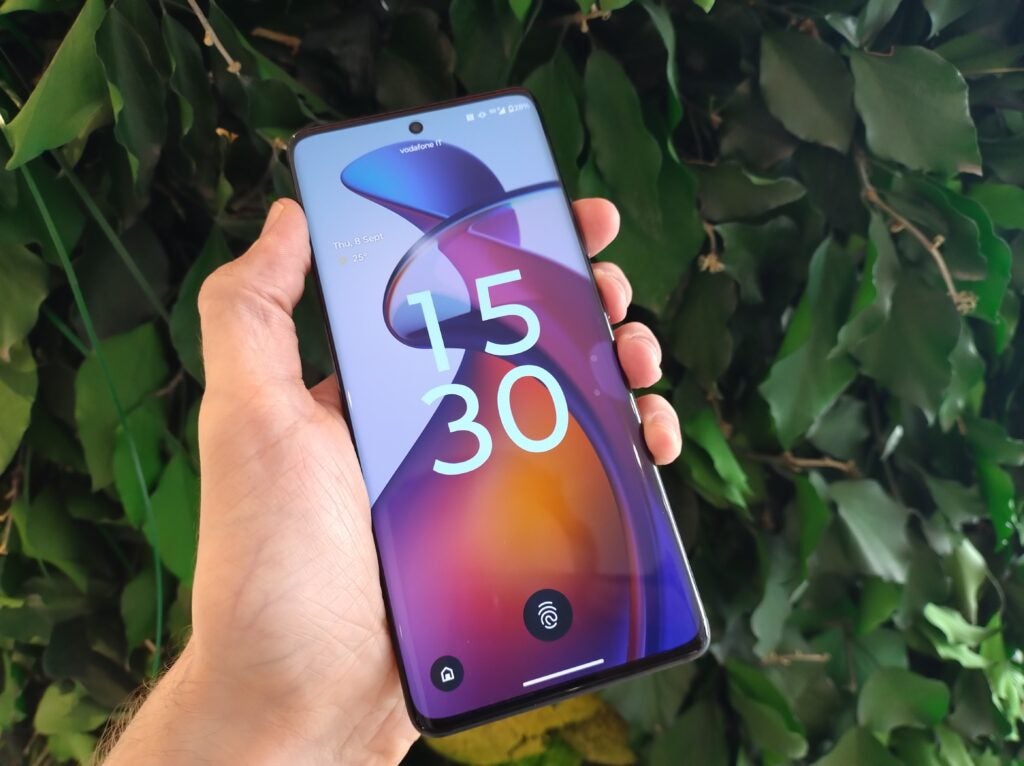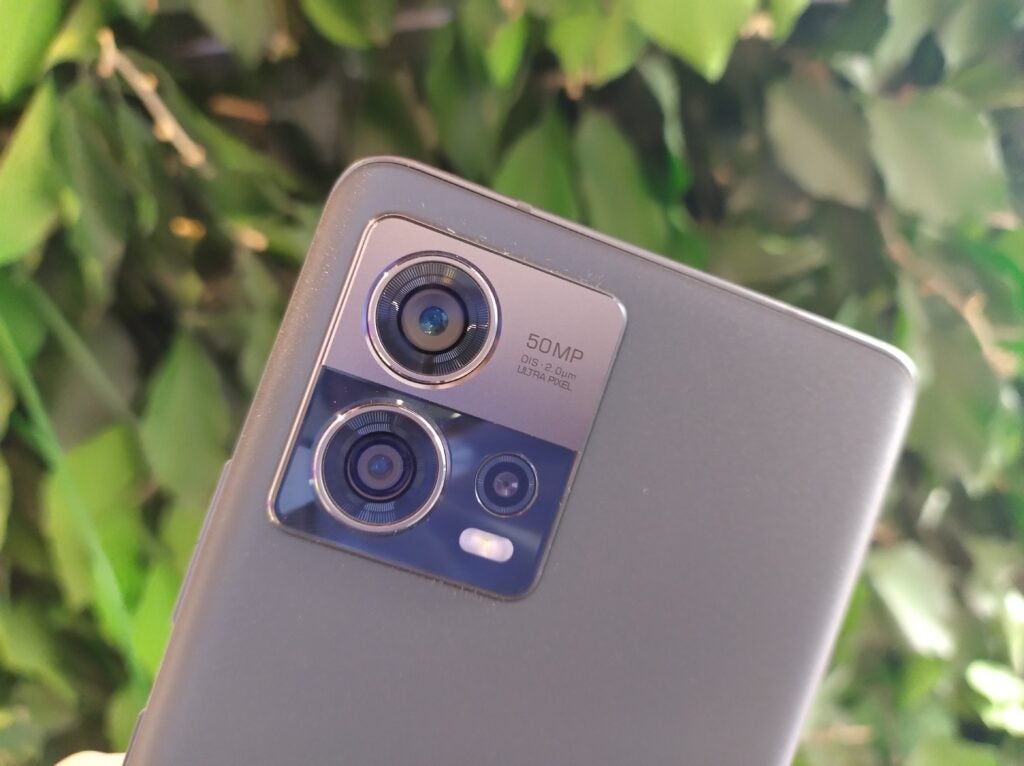Does the middle model from Motorola’s range really succeed in melding beauty with performance? Here’s what we thought after just a few hours with it.
-
6.55-inch 144Hz pOLED displayThis screen is large and particularly smooth thanks to its high refresh rate -
68W fast-chargingMotorola claims that you’ll get enough power for a day’s use after just 10 minutes of charging -
Snapdragon 888+ 5G chipsetThere’s a very capable chipset (last year’s Qualcomm flagship) on board this handset
Introduction
Motorola has just unveiled its second wave of Edge 30 smartphones, the top-end Ultra, the lower-specced Neo, and the middle child which is the Fusion.
A keen emphasis has been placed by Motorola on the physical design of these handsets, just as much so with the internal specs, so does the second-in-line of the new series manage to be both good-looking and, well, good?
Design and Screen
- Attractive and comfortable design
- IP52 rating
- Promising screen
Motorola claim that the Fusion name was inspired by the idea of fusing physical beauty along with high performance, so you’d have good reason to expect a handsome device. For my part, I certainly liked the design.

The rear panel is matte in finish, and pleasingly tactile too. Not only has my Cosmic Grey variant remained blissfully fingerprint-free, but I also just enjoyed holding it due to its comfort in the hand. Even though the screen is large, it doesn’t feel unwieldy when you’re using it because it only weighs 175g and is just 7.45mm thick.

The blue vegan leather version gives an alternative finish (as seen above), though I was less keen on this one when I briefly tried it out as it tended to feel a little plasticky rather than genuinely premium.
The camera module remains neat and fairly attractive, tidied away at the top corner of the handset rather than sprawling across the rear as we’ve seen in some other recent rivals (such as the OnePlus 10T).
In more practical terms, it’s got an IP52 rating against water and dust resistance, and it has support for Dual SIM as well which is a handy feature.

The display is a stand-out aspect of this phone, and that’s particularly due to one feature: the 144Hz refresh rate. Aside from dedicated gaming phones you’ll rarely find smartphones with such a smooth screen, and it certainly helped the UI to feel zippy as I flicked around it during my first period of use with the device.
It’s plenty sharp enough too, and so it stood to give a strong impression the first time I used it; however, the real measure of a phone’s display comes when we’re putting it through more demanding tasks, so we’ll reserve judgement on this one until we’ve tried watching movies or playing games on it.
Another eye-catching feature (literally so, as its stamped on the top side of the phone) is its Dolby Atmos stereo speakers; initial attempts playing music and podcasts did seem to provide good audio feedback. There’s no 3.5mm headphone jack of course, but if you’d prefer to listen through headphones then the Edge 30 Fusion does offer Bluetooth 5.2.
Camera
- High resolution 50-megapixel main sensor
- 32-megapixel selfie snapper
- No telephoto lens
Unfortunately I’ve not had the time to fully test out the camera in all situations, so it is certainly too early to start running the rule over it, but the specifications do at least seem promising.

Led by a 50-megapixel main sensor with f/1.8 aperture, there are two other snappers present on the rear of the device, namely a 13-megapixel ultrawide lens and a depth sensor.
The only major miss from that trio is the lack of a telephoto sensor, which means you will have to rely on digital zoom rather than optical zoom. This could result in poorer image quality, though we’ve been pleasantly surprised by the digital chops of some high-resolution smartphone cameras in the past.
Based on the scant few pictures I’ve had the chance to take with the main sensor, it certainly look promising and I’m interested to see how well it will acquit itself in more challenging lighting.
The video capabilities of the main sensor certainly shouldn’t be overlooked either, with it being capable of 8K footage at 30fps or 4K footage at 60 fps; we’re looking forward to seeing how well your home movies will look with this camera.
On the front of the device, there’s a 32-megapixel selfie camera present in a holepunch notch at the top of the screen.
Performance and Battery
- Last year’s flagship Android chipset on board
- 4400mAh battery capacity
- 68W fast-charging
The Motorola Edge 30 Fusion takes the somewhat unusual step of using the previous-but-one generation’s flagship chipset; so not the Snapdragon 8 Plus Gen 1, not the Snapdragon 8 Gen 1, but the Snapdragon 888 Plus. This is still a capable bit of silicon of course, built on 5nm architecture and packing 5G connectivity, so we’ll have to observe through experience and benchmark testing whether this was a better choice than using an upper-range mid-range processor from the latest generation, as may have been expected.
The software at play here is Android 12, and it’s actually one of the more charming iterations that I’ve used. Bearing very close resemblance to the Pixel 6, it makes good use of the Material You theme in order to give a simple, consistent, and easily customisable product. I quickly and happily got used to it – and if you think you’d struggle, then the Moto app (one of the few that comes pre-installed) can give you some helpful pointers.

Strong battery life has long been a point of pride for Motorola’s devices, even if this one does weigh in just under the customary 5000mAh, at 4400mAh instead. Nonetheless, my impressions after using the phone for a day have been positive; battery certainly doesn’t seem to drain quickly, and in part that might be thanks to the adaptive 144Hz refresh rate, which can reduce in intensity in order to save some power.
When it comes time to charge the handset back up again, it’s supported by TurboPower 68W fast-charging. Motorola claims that this will deliver “power for the day in just 10 minutes of charging.” When asked for more specific estimates, representatives claimed that it will charge to around 50% after 12 minutes and it will take just under 40 minutes for a full charge. These are good numbers that will help to give users a bit of peace of mind if they fear being caught short.
Early Impressions
It’s too soon to give our final verdict just yet, so stay tuned for that a little later. However, we certainly can say that there have been some encouraging signs that we’ve seen in the brief time that we’ve spent with the handset.
The design certainly does both look and feel good, which is a feather in Motorola’s cap given how much emphasis was placed on it, and the screen is also highly impressive, particularly due to its very high refresh rate. Though I’ve not have enough time to fully assess either the performance or the battery, there were no discouraging sings in the case of the former, and plenty of reason for encouragement in the latter.
A great deal of this phone’s appeal is likely to rest on the camera; be a success and it’s a handset that will likely be recommended, but if it fails to reach great heights then the device may end up as nothing particularly remarkable. The specs do give us cause for hope, so remember to check back to see our final opinion once the full review is published, after a thorough test of the phone’s capabilities.
FAQs
Yes, this phone supports 5G connectivity as long as you’ve got a compatible SIM card and network coverage.
You can get this phone in Cosmic Grey, Aurora White, Solar Gold, or Neptune Blue.
















